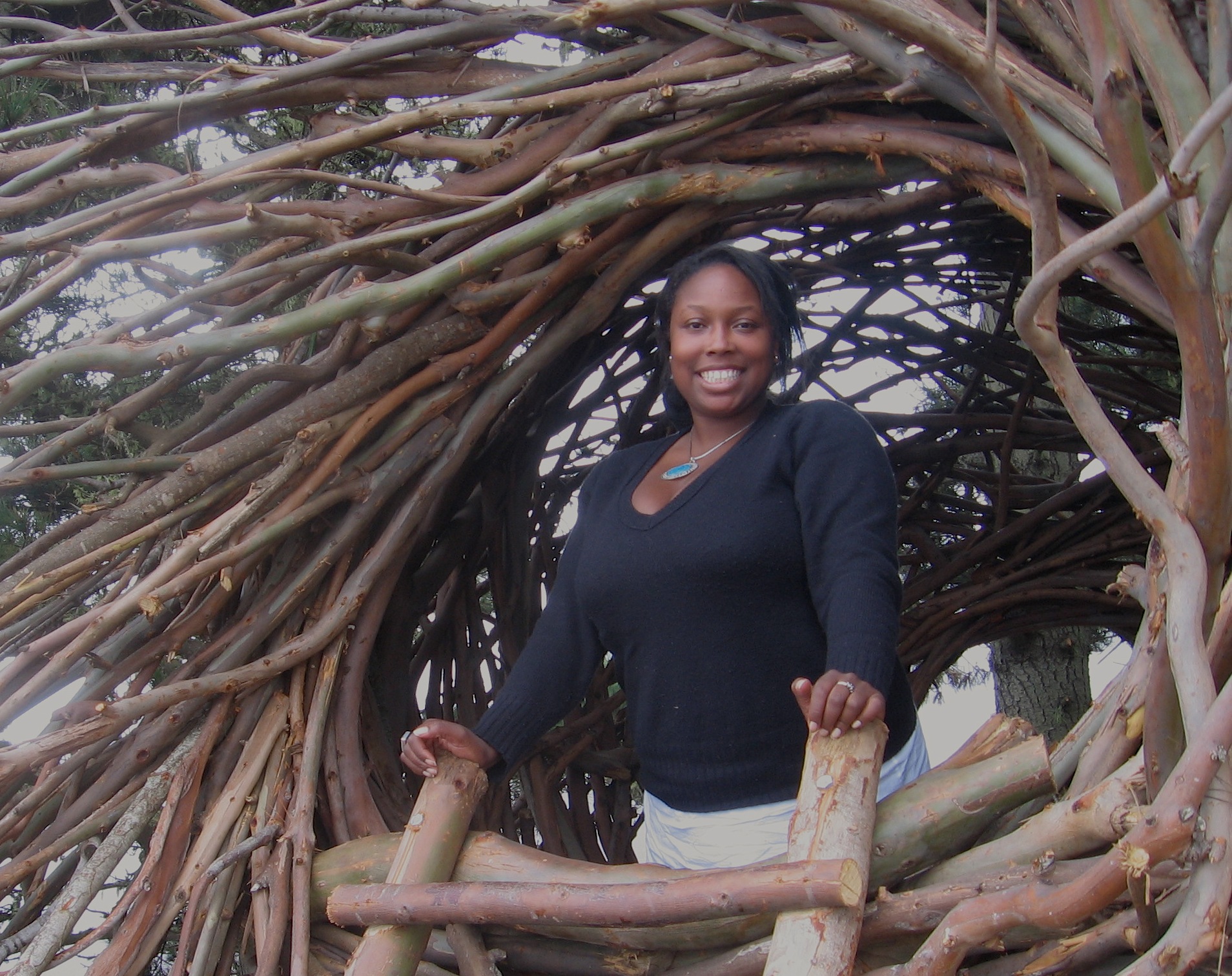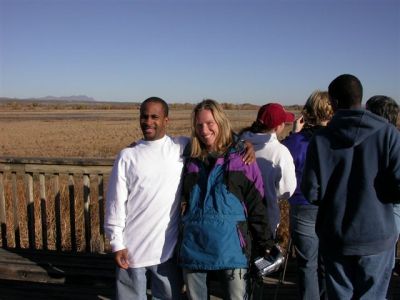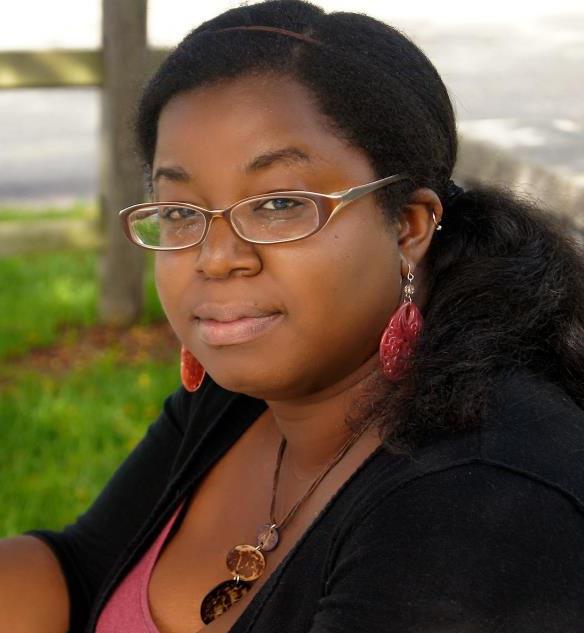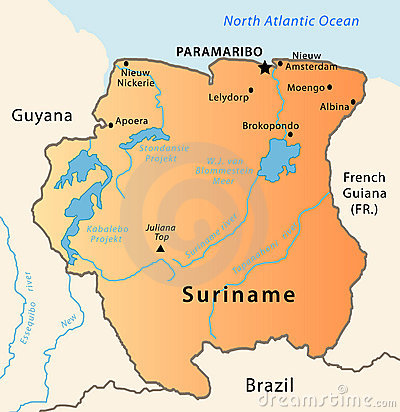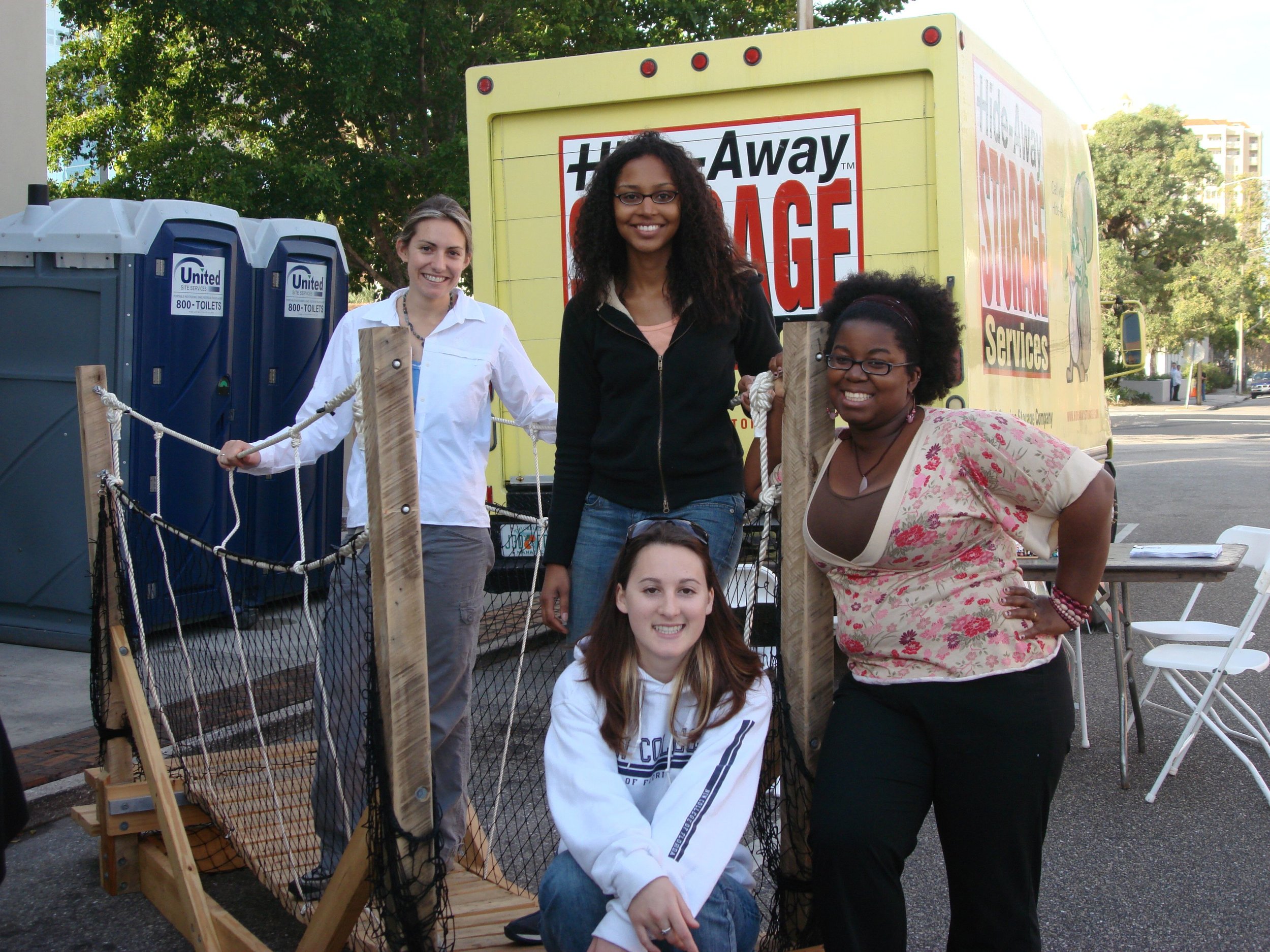Same Dance, Different Day
/Nina Roberts
San Francisco State University
Associate Professor of Recreation, Parks, & Tourism
She holds a special place as a mentor, a friend, an a professional I genuinely look up to. We met when I was in the heart of an all too common struggle of a small, non-profit environmental justice education organization going down. Extremely busy and stressed out, a program request came through my email from Nina. Slow in my responses, the first thing that stood out to me was her persistence. She called and left messages and emails trying to schedule her college class for a presentation and stewardship experience. I could have easily taken a dismissing tone to her request, using "a full schedule" as an excuse, but something in her voice and her style of communication triggered my intuition to say this would be a good thing to follow up with. Little did I know I would begin a great relationship with a person who had a strong understanding of the justice embedded in the place-based education I was speaking on. Not only that, but what I quickly observed with Nina, was that she was in a position (as a Professor) to include social justice into her professional equation. She engaged in discussions about race, equity, injustice, and most importantly personal experience. You see, in the "conservation" world, this isn't a common approach. And I recognized that.
So when I sat down to talk to her it was one of those rare opportunities to capture her perspective to the depths of her upbringing and influential experiences throughout her career that most of her other '500' profiles online won't reveal. What she offers below is a true gift and just like her personality, it's "real talk".
NR: I’m a professor at SF State University, going into my 9th year. I've had a variety of jobs in the field and, at this time, believe I have found my calling in terms of the work that I do. My goal wasn’t to get a PhD to be a professor. I wanted to get the degree to improve and perfect my research skills on visitor use and social science relating to parks and public lands. What I mean when I say "I’ve found my calling" is that I’m doing what a lot of my career has enabled me to do in one hub.
As far as my ethnic background, my family comes from a mixed-race heritage. My grandmother is from Madras, East India and maternal Grandfather is from St. Lucia in the Caribbean, West Indies. The history of Caribbean is ultimately of African descent; much of the European influence we see today came later. My father is white, from Liverpool, England. And, my parents were married in New York in the 1950’s when it was illegal in some states. They were part of that core of the Northeast where life was mostly black and white. When you have a mixed mother and a white dad having me and my four siblings, we never, ever, fit in anywhere as far as race relations. We were brought up to believe in the human spirit and that you can do and be whoever you want to be. So I will always embrace that.
My interest in parks, outdoor recreation and environmental studies came from my childhood. My mom would stay home to raise me and my siblings. She loves to read and do her artwork; she is a very talented artist. My dad would take us out to the park, the beach, mostly anywhere outdoors. Nature was a big influence on me as a kid. As a teenager, I started to work at this playground and this gave me the idea of working with kids because I had so much fun. So I later became a camp counselor in Massachusetts. The counselors were all white and the kids were all black and brown. I knew this dynamic all too well! I noticed it, but never really thought anything of it.
I pursued my Bachelor's degree in this field (Boston area) because I knew I could be a recreation professional and study parks and make difference in the world. I had different jobs like the YMCA, and also being an athlete, I was a high school coach, strength fitness instructor, etc. The more I became hooked on the environment and outdoor adventure activities, the more I wanted to pursue THAT! So as I was exploring a career in outdoor adventure, and learning about it, the more I’m thinking about myself and my connection to the outdoors and parks. I began to realize that, from a gender standpoint, back in the 70’s & 80’s when I was growing up, there really weren't too many women doing what I enjoyed. It left me curious to know, “Where are all the women?” and “Why are all the leaders and instructors of these programs white guys?” It wasn’t until later, in retrospect, that I began to ask those questions as a professional. Then I started meeting the strong, powerful women doing work about understanding gender differences in the outdoor arena. How people do things regarding participation patterns, and how are women vs. men leaders different in terms of style? How do we change training or embrace young girls in outdoors, different dynamics of groups, changing of group dynamics in outdoors? Lots of questions were being asked back then, and still are.
So as I got more involved in natural resources and park management, I got a Master's degree at the University of Maryland and became more savvy meeting people and noticing a lot more happening around me, especially professionally. I began to ask again, “Okay, where are all the black and brown people? I see more women coming into the field based on the feminist movement infiltrating all disciplines in the 70’s; more women were then becoming managers and leaders in the 80’s. Now that's part of why the conversation is continuing…around 'why so few black and brown people?'. It's changing, but very minimally. I really wanted to keep going by studying this and understanding what's up. So I moved to Colorado in the late 90's to pursue my PhD in this area and thought advanced research opportunities would bring the value of my work to a new heights.
At the time, there were only 3.5% black people in the whole state! And Colorado is a big state! I knew I was going to encounter some challenges. My doctoral program, revolved around exploring minorities in the outdoors and wilderness, and my research was amazing. Apparently, when I arrived no one had ever studied that topic in Colorado specifically except for a couple of others, so my phone was ringing off the hook!
Understanding now, from more of a racial/cultural diversity standpoint vs. the gender piece, I started to learn more about what scholars were doing with respect to the black and brown people and exploring these topics. So all this started to become part of my DNA regarding how I personally move through world, as well as share what I know with the communities that I reach and try to connect with. But my interest is also in taking our work to that next level of change; how do we create change in these communities?
For me it’s that race dynamic, gender dynamic, AND building in “what is the relationship to the socio-economics of our lives?” Therein lies that race-class-gender intersection and what really matters in terms of that relationship. What is in the middle of that “Venn-diagram”, so to speak?
I went to Facing Race conference for the first time in 2012 sponsored by the Applied Research Center, now Race Forward. I’ve done lots of speaking engagements and conferences but never came across a situation where I didn’t know a soul in the room! There were thousands of people there most of whom were black and brown. And, the majority of the participants were activists. I started to wonder if any of the work we do has any level of activism? And yes! The work that you did, Raynelle, with LEJ, and there are other organizations like that. I really felt a sense that, “We can’t work in a silo” so I’m really glad I went!
RR: One thing that I learned from the legacy of LEJ; activism itself has transformed. Now, people are recognizing the importance of “putting our egos and power aside, asking how can we work together?” And I think that’s the direction the world is going, the direction that change is happening, is working in collaboration.
NR: Yes, collaboration! And I've seen different challenges in various organizations I’ve worked with, and what I have been able to do in facilitating more collaborations, personally/professionally has taught me a lot about communication styles. Especially when I was younger, my abilities shifted more positively in order to really get things done. Those are lifelong skills to develop for knowing the best way to create change. I mean, I’m a native New Yorker. I’m going to put on my New York Attitude in a heartbeat if I have to!
As an example, from a recent book chapter I wrote about mixed race dynamics, I ran into this situation with this one organization I worked with that I just knew I had to change. The Student Conservation Association (SCA) is a national youth conservation organization that I worked for and have fond memories of my time there; it's a great organization overall. My boss was a black guy, and has been a solid mentor for me, still. When I was working for SCA, the Human Resources director asked me (all employees) for demographics such as race, gender, age, etc. and I was supportive of that. I think the data is extremely valuable, but on the form I was given, I created my own damn box for a mixed-race identity. And the HR director had the cojones to call me and tell me that I can only check one box and not create one. And I said, “The hell I do not!” I requested the organization to support me (and the other two bi-racial people out of 60 staff), and they didn’t! I decided to write a memo about how angry I was about how she treated me in terms of making me identify one of my races over another. I was pushing that card. What I wrote was very professional, but here’s where I made the mistake…I sent that memo to every senior staff in the whole organization, all the way up to the food chain to the President and every regional director. "So what?" I thought. I needed everyone to know that I was upset. And my boss said, “Well Nina, you know there are other ways to get your point across and sending a memo to the entire organization is not really the best way to do that.” And that’s one example of lessons learned about effective communication in seeking change. I actually wrote about that situation in one of my book chapters about social justice.
What happens is that we can put our stuff out there in a way that is gentle or unassuming, and reaches a couple of folks but may only get to a certain level and never go further. If issues or circumstances stay at a lower level, change is not going to occur unless you meet certain decision-makers in management as part of the equation. I’ve been in places where I’ve succumbed to hierarchy and have done what people have told me is the procedure to follow; at times I've gotten nowhere and others I've observed have gotten nowhere either. So my approach at that time was, not waiting for somebody to tell me that there’s a certain way of getting things done. That’s the Eurocentric way; one step at a time. I understand the value of proper procedures, but how can we create change within a system that already has barriers preventing people from creating that change? That’s just something I want to share with people regarding the mixed race experience and how we’re still often capped until we fit into this mold.
Throughout some of the jobs I’ve had I’ve made lots of mistakes along the way, we all do. We can still have those conversations with our friends over cold beers and vent all day long! We all have a reputation to uphold so obviously there are moments where you don’t say something to someone’s face because it's only going to anger them or make things worse. You won’t improve things and communication takes longer to navigate. I want to keep it real, but how do we keep it real without being criticized? I've experienced many lessons learned that's how! And, simply put, reality is that when we talk to our friends and colleagues, especially in minority communities, it's a different conversation.
Now as a college professor, I tell my students, we don’t have to like people we work with or collaborate with, but if we want to engage or participate in creating new directions or maintaining positive experiences and quality of life for people, we have to respect them. Respect for others' background, experiences, who they are, and where they come from is huge. But we don’t have to like them and, oftentimes it comes down to personality. Nothing more, nothing less and that’s reality. We’re never going to like everyone we work with, so let it go.
How, then, do we find the good in people that enable us to work together? That’s the piece that most humans have difficulty with. When thinking about gender, for example, how can we get the guys to leave their ego at the door, or channel their power to work well with strong women? Don't get me wrong, there are lots of great men as allies that we work with. Part of what I've observed, as well as studied, relates to the question of how do white guys best connect with a black man, Latina woman, or young person of another culture that has ideas and wants to offer new a perspective for their community, and wonder if their idea is going to be welcomed?
Language, actions, behaviors, etc. are similar over time but we give a new label to it so it feels like something different. Like, “my voice is not being heard" or "we need more voices at the table.” That's just another way of saying, “invite that brother from down street, sit ‘em down at the board meeting, and listen to what he's gotta say”! It’s the same platform. We need to create and craft vernacular to get people to listen and embrace what we are doing. I say whatever works should be used without dancing around the hard stuff.
And "relevancy” is a buzz word right now. Everyone in the 'parks' world keeps saying, “We need to be more relevant” and, yes, seems to me we’ve BEEN needing to be more relevant! But now all of a sudden you start picking up the word and tossing it about without really knowing what it means to the communities you'd like to serve? My response is, “Right on! What are you going to do about it?”
I don’t often hear black and brown people using certain language white people are using. And that’s okay. Unfortunately, we just haven’t seemed to find common vernacular yet, really. What’s relevant to me or you may be different from what the white people think is relevant to our communities. Funders, is another example; they try to do things like, giving money for XYZ, and that’s great, but are the goals and needs really matching? Sometimes they are but I see a dichotomy and sometimes a disparity with organizations they seek to support. Funders with resources may not empower an organization to stand on own two feet and create that level of camaraderie enabling them to participate in collaborative process directly. I see incremental changes and that's important. Partnerships and collaborations are two different things. You can be in partnership with someone, but who’s got control in making decisions, managing budgets, etc? You know, who’s calling the shots?
RR: That’s what excites me about your personality and the way you do things. One thing that I noticed, is that if one wanted to Google Nina Roberts you would see several pages of what you’re doing now and affiliations of this and that. What you’re sharing now is true to life and I think its what people should be hearing about.
What I saw was very unique and unexpected in my search of your online profile. If I were to Google any other prof, it would be strictly 'outdoor publications and how do people play a part in that'. But for Nina Roberts, inclusion is at the center of your work. “Who I am is first, and then love the work. And that’s what I see in you, is that you love the work you do. You are contributing to outdoors, for the sake of outdoors for everyone and the environment and it’s the love and the passion.
NR: And I appreciate you laying that out because I think that's what has enabled me to enjoy what I do so much. I’m there for other people in a way that I’ve never been there before. In other words, at first it was who am I? How do I move thru world in relation to career path, family relationships, etc? There were times where I’d be more cautious in my approaches because I learned to understand before I acted.
Mentors including parents and grandparents have told me, “You need to think before you speak”. There were times where I hadn't done that very well and I’ve said some sh** where I found myself apologizing. And I started wondering why am I apologizing all the time? Earlier in my career, I needed to think through things, what are the dynamics, what are the implications of what I say or do? And it goes back to not learning that in a text book; we have to experience that in order to create change for ourselves regarding how we want to act intentionally or with more empathy for others, and conviction about the future. That’s an important life skill and we need to learn how to develop that; being judicious and prudent in our decisions is vital for success!
The older I get, however, the less I sometimes worry about the "how" because life is too short! You know if someone did or said something that I believe needed a response, I’m rarely going wait anymore. I’ll think about the circumstance, sure, but I’m going to get on the phone, call someone who knows someone, who knows someone, to fix the problem! I’m not going to wait for us to analyze and assess what happened for weeks on end…sometimes I don’t have the patience for waiting because in some experiences I've had, it seems people in power need to go behind closed doors before they make a change or make a decision which can take years instead of weeks! Really? Again, the Eurocentric way is one step at a time, which is fine but when people take their sweet time at the expense of minority employees or a culturally diverse group of program participants, that's not okay. You know what I say? Move! We talk about motivation in leisure studies; the root of motivation is to MOVE! So if there's something going on in a community that wants a new playground or another neighborhood seeks to get a Power Plant removed, I feel like saying, “Whom do I need to call to get this done?
How do we come together as a collective community? It does take time, no question. Part of my point is that the bigger stuff, or requests from communities of color, can take a long time to come to life because of who is in power. We find back doors to get to places, new ways to approach things, but who is the messenger? How are decisions made in organizations? We learn to dance a little, to play certain games. But sometimes the games that are played in under-resourced communities are what I have little patience for.
It gets tiring to constantly push and badger organizations and specific individuals to do what doesn’t have to be that difficult if the genuine intention is there. But action must be behind the words. Diversity will always be here in our communities, in our worlds. It’s respecting differences, embracing, and recognizing them that matters and helps us with that collaboration. Growing up, did I recognize this? Sure! Did I treat everyone the same? No. Does everyone treat everyone the same? No.
RR: Because no one is the same!
NR: Right! So what we’re talking about now is “social justice”. People were only talking about social justice as a paradigm. But that’s what the diversity movement is all about… social justice. It’s the same dance different day! As we all know, finding our common ground is merely one facet in helping build relationships.
RR: Sometimes there’s that notion that environmental justice is for people of color. It’s like, white people recognize you’ve been doing environmental justice just as long. We need to just do this together and not make it a dichotomy for whatever reason. We all just want to do the same kind of work.
NR: True, because in some people’s minds they associate it with race and I’m over that! So I ask, what do they mean by diversity? And if the answer is ‘We need more black people’… That’s racial diversity, so people need to be more specific about what is meant by diversity. And when you talk about social justice, what are you referring to? I always encourage my students to seek context and not make assumptions.
Are we ever going to have real equity in our lifetime? I don’t believe so. I want to be a realist and ask, “How are we going to create more collaboration?” And in the work that we do, we’ve seen milestones over years that show progress. I occasionally think about the "Letter to the Big Ten", written in 1990 that went out to the top ten environmental and conservation groups by minority communities. This was followed by the First People of Color Summit on the Environment held the next year, and was a landmark event and a galvanizing movement for people of color throughout the United States. There are some professionals revisiting that letter, year after year and asking what has changed in last 20-yrs? Guess what? It hasn’t changed much in who is there, the composition of staff, board, fee-paying members, etc. Tokenism is alive and well. Over time, organizationally, we’ll see some shift because changing demographics are inevitable. We may be in rocking chairs, but we’ll see it!
As professionals, we also have to be careful because it's a misnomer to say “All of us, we the collective minorities of the nation” are all aligned and on same playing field and want the same level of change; it's actually not true. I’m learning to think differently about the economic strata, for example, and how that affects culturally diverse communities, connection to white poverty, and all of us merely trying to do our best work. There are intergroup conflicts and lack of cohesion within some minority communities; then I observe (or read about) white people using race as platform for most of the problems and forget to include socioeconomic issues. They say, “See they [minorities] can’t figure it out, can’t get it together, they, they, they…” but, to me, it goes back to collaboration, common language, respect, truly seeking social justice, etc. Groups with money, let's say predominantly white managers, ready to support those in need want to see that minorities have their stuff together and they want to come to table for all the right reasons.
RR: I’ve thought this through too and I asked myself if working with ethnic minorities only is being exclusionary, and it is! But just the concepts you’ve been talking about, I’ve realized the people who drive the social justice work and create these programs, should be from within the communities, which are predominantly ethnic minorities.
So you’re spinning this hamster wheel if you’re saying, “Okay, white people with money, you recognize there are needs to be diversity efforts or you’re pressured to do so. Should you then be the one to create and design those programs and give that money, or should it be the other way around? We should be the leaders creating that because we know what we need, what we want.
Our country has a history of racism, segregation and institutional decisions and power. Ecology is a predominantly white profession and no one wants to talk about nation’s history and civil rights and how that might connect to low numbers of minorities participating.
NR: The beauty of what you’re doing is to let it unfold. Let’s see what kind of contributions people end up making. Those conversations are important too; some people tend to blast organizations for what they're not doing, or for being ignorant, stupid, lacking cultural competency, etc. People of color need a way to “go there” in conversation. A safe place to just release ourselves and strategize to write that letter, or make that phone call in a way that we are going to be respected for our capabilities, intellect, or contributions, not just because we’re an “angry black person mad about something”.
RR: Any last things you want to contribute or say for this Blog?
NR: Change! Life is about change. Change is good, transition is hell. Progress in life isn’t possible without action! Thanks for this opportunity, Raynelle- keep up the great work of sharing people's stories.







